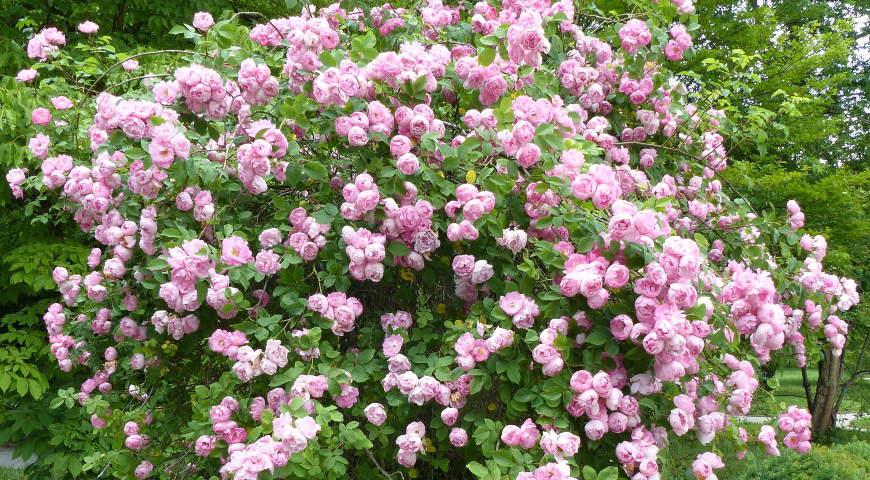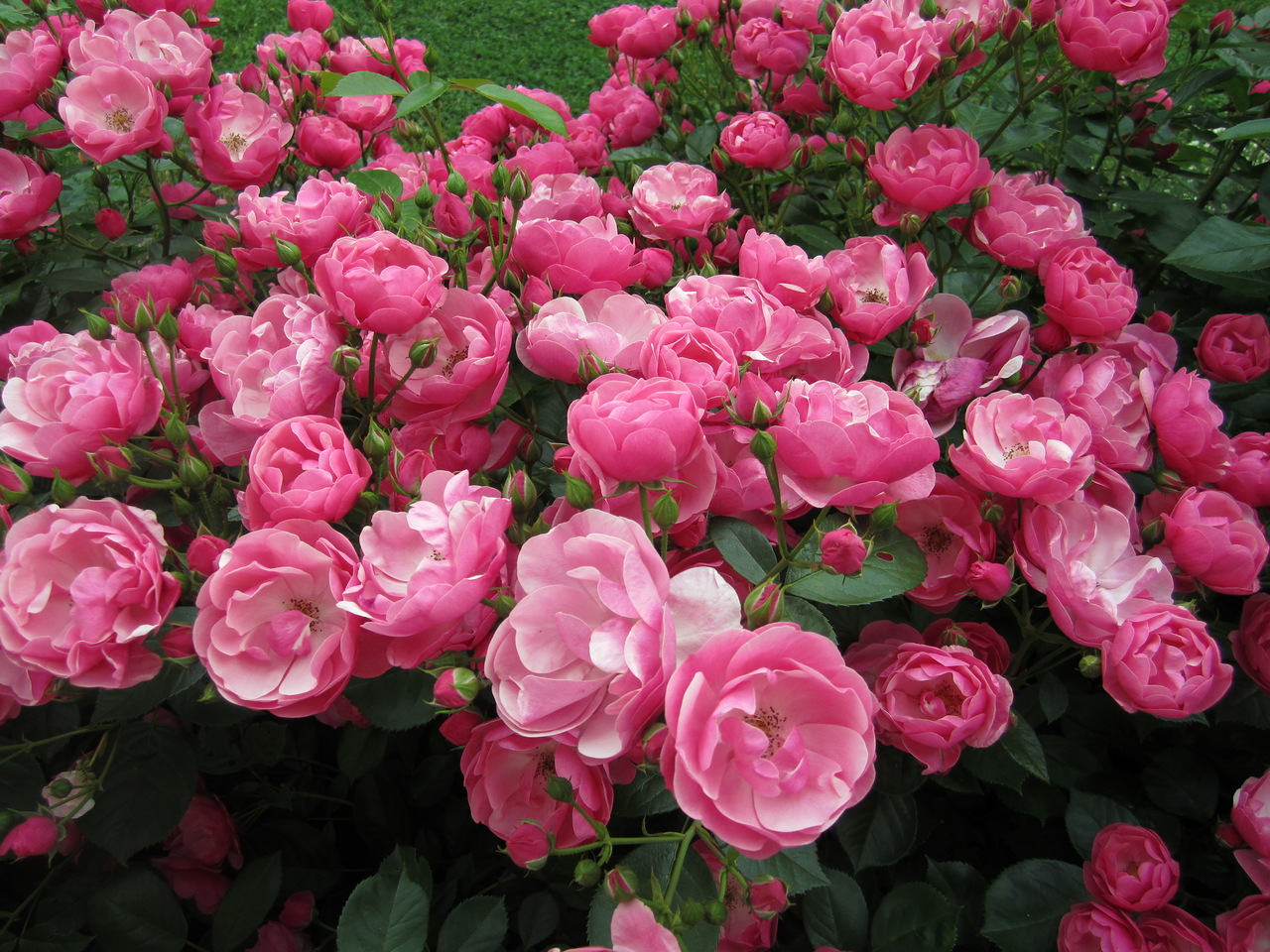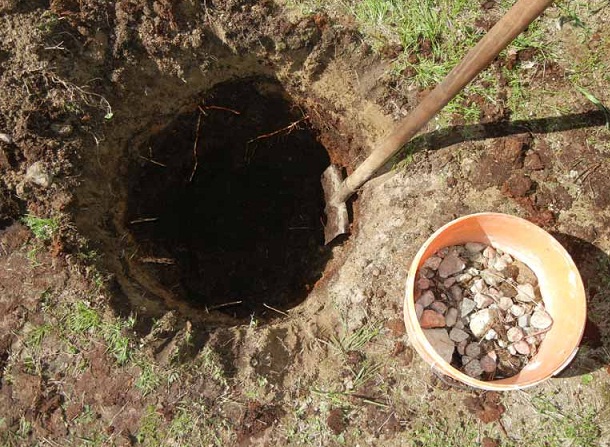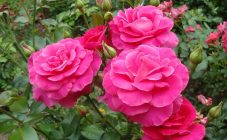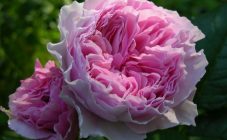Content:
Roses of Cordes are a relatively young gardening group, owing their origin to the hybrid of the rose Cordes (Rosa x kordesii), which was obtained from the varieties Rugosa and Vihuraian (Rosa rugosa x R. wichuraiana). When breeding roses of this variety, special attention was paid to frost resistance and unpretentiousness of plants. The company Kordes (W. Kordes' Söhne), the founder of which at one time bred this garden group of roses, is one of the ten oldest leading rose nurseries in the world. There are dozens of varieties and hybrid forms in the company's catalog today.
Description of the roses of Cordes
Roses of Cordes have a number of distinctive features that set them apart from other varieties:
- unusually high plant resistance to pests and diseases;
- large, terry in most buds, most often collected in inflorescences;
- good winter hardiness;
- glossy surface of sheet plates;
- large size, the height of the bushes ranges from 70 cm to 3 m;
- profuse and highly extended flowering - Cordes roses bloom from June to the end of November 2 times per season.
Cordes hybrids in a wide variety are presented in all garden categories - bush, standard, floribunda, park, ground cover, miniature, tea hybrids, as well as climbing forms. Flowers of this group of roses are distinguished by their classic goblet shape and a variety of color palette.
Characteristics of popular varieties
Among the whole variety of Cordes roses, one can single out the best varieties, which not only have absorbed the best features of the group - high cold resistance and immunity to many diseases, but also have a particularly attractive appearance. These varieties include the following:
- Alchemist. The variety is interesting in that its buds change the color of the petals depending on the ambient temperature. The flowers of the Alchemist reach 10 cm in diameter, and their color varies from yellow to deep peach with a pinkish tint. It is grown as a climbing or bush culture. The height of the bush is about 2-3 m. A distinctive feature of the variety is its strong branching.
- Ilze Kron Superior is one of the most beautiful white roses. However, it cannot be called snow-white-white, since the flower petals of this variety are creamy. The buds themselves are large, more than 10 cm in diameter, terry. They group compact inflorescences of 4-5 flowers.
- Blue Boy is a rose of the scrub group. It is a dwarf shrub, whose height rarely reaches 50 cm. Compared to other Blue Boy varieties, it stands out with flowers of a pink-lilac shade. The bush blooms so densely that it needs to be tied up, as the branches of the plant can break under the weight of the buds.
- Angela is a bright representative of the romantic trend in the selection of roses. This Cordes rose belongs to the floribunda group. It blooms with caps of small carmine-red bowl-shaped flowers with a pale pink center. Not afraid of heat or rain. The bush is dense, tall, branched. Angel buds smell like green apples.
- Limbo is a dwarf shrub with cone-shaped flowers. The variety differs in an unusual color - the petals of the buds are colored yellow, which turns into green at the edges. The height of the bush is 1 m.
- Kvadra is a bright red rose with large, double flowers, collected in small inflorescences. The height of the bush reaches 2 m. This variety is distinguished by a rich fruity aroma and the shape of the buds, characteristic of old roses - the flowers can be conditionally divided into 4 parts.
- Jubilee of Cordes. The description of the variety indicates that it was created for the 125th anniversary of the Cordes company. Rose Kordes Jubilee is a vigorous dense shrub with strong shoots. The aroma of a plant of medium intensity with pronounced notes of vanilla, heliotrope and jasmine. The Jubilee Cordes rose blooms with large yellow flowers, the petals of which have a red edging.
- Larissa (or Larissa) is a ground cover rose with a weak aroma. The flowers of Larissa rose are small, their diameter does not exceed 5-6 cm. The petals are colored in a gradient - a creamy pink hue turns into a rich pink. Branched bush, dense. Rosa Larissa practically does not get sick with powdery mildew and black spot.
On the basic principles of agricultural technology
Roses of the Cordes group are very easy to grow, which is perhaps the main advantage of this variety over others. These plants do well both in the shade and in the sun. They successfully take root on almost all types of soils, are resistant to any weather conditions and sudden changes in temperature.
Landing
The optimal planting time is May-June or September-October. It is better to plant bushes in cloudy weather. If at the site for planting groundwater lies close to the surface of the earth, then drainage from rubble should be laid at the bottom of the planting pit.
Immediately before planting the plant, you can lay a layer of compost on the bottom of the planting pit (about 5 cm, no more). The top fertile soil layer pours out on top. This is done to avoid direct contact of the roots of the bush with the fertilizer.
The depth of the pit should be on average 30-40 cm.
Follow-up care
A bush of roses of the Cordes group keeps its shape well, so it does not need to be tied up and substituted to the support stems. Fertilize the plants as desired, since they do not need regular feeding.
In areas with a warm climate, roses are grown without insulation, but in the northern regions they need to be covered for the winter, no matter how hardy they are. To do this, the bushes do not need to be pruned, it is enough to bend the branch to the ground, spreading spruce paws under them. Roses are insulated with burlap, roofing felt or a dry sheet.
Diseases and pests
Roses of Cordes are generally quite resistant to disease, but under unfavorable conditions, plants can damage aphids, thrips or spider mites. Rust and gray mold contamination is also possible. Powdery mildew and black spotting of roses are extremely rare.
The best roses of Cordes for the Moscow region
Without exception, all roses of Cordes are very winter-hardy, but the following varieties are the most cold-resistant:
- Parole is a vigorous shrub with large, goblet-shaped, dark crimson buds. The aroma is strong, the foliage is glossy. The height of the bush is 90 cm.
- La Perla is one of the most stable light roses, which withstands both severe cold and the scorching sun equally well, without fading in direct sunlight. The height of the bush is 70-80 cm. The variety blooms profusely and is resistant to black spot.
- Beverly is a variety with bright pink double flowers and rich aroma. The height of the bush is 80 cm.
- Marvel is an unusual two-tone hybrid of red, yellow and orange hues. The height of the bush is 60-70 cm.
- Kupferkönigin is a variety with bright yellow buds. The petals do not fade in the sun. Suitable for cutting. The height of the bush is 85 cm.
Roses of Cordes look advantageous when landscaping vertical structures: fences, pergolas, arbors, but this is not limited to their scope. They are used to create ampelous cascades, as well as when decorating high stone walls.In addition, many vigorous varieties, such as the Schloss Eutin roses, are often grown as solitary elements since they do not need support.
This group of roses is perhaps the most interesting among others due to increased frost resistance, because many do not plant the "queen of the garden", fearing annual shelters for the winter. With the Cordes varieties, this problem has been solved, although in the first year, breeders advise to insulate the seedlings for the winter, but this is at the discretion of the grower. Having chosen the variety you like, the main thing is to plant the plant correctly and provide further care, and then the rose will thank you with its abundant and unusual flowering.
